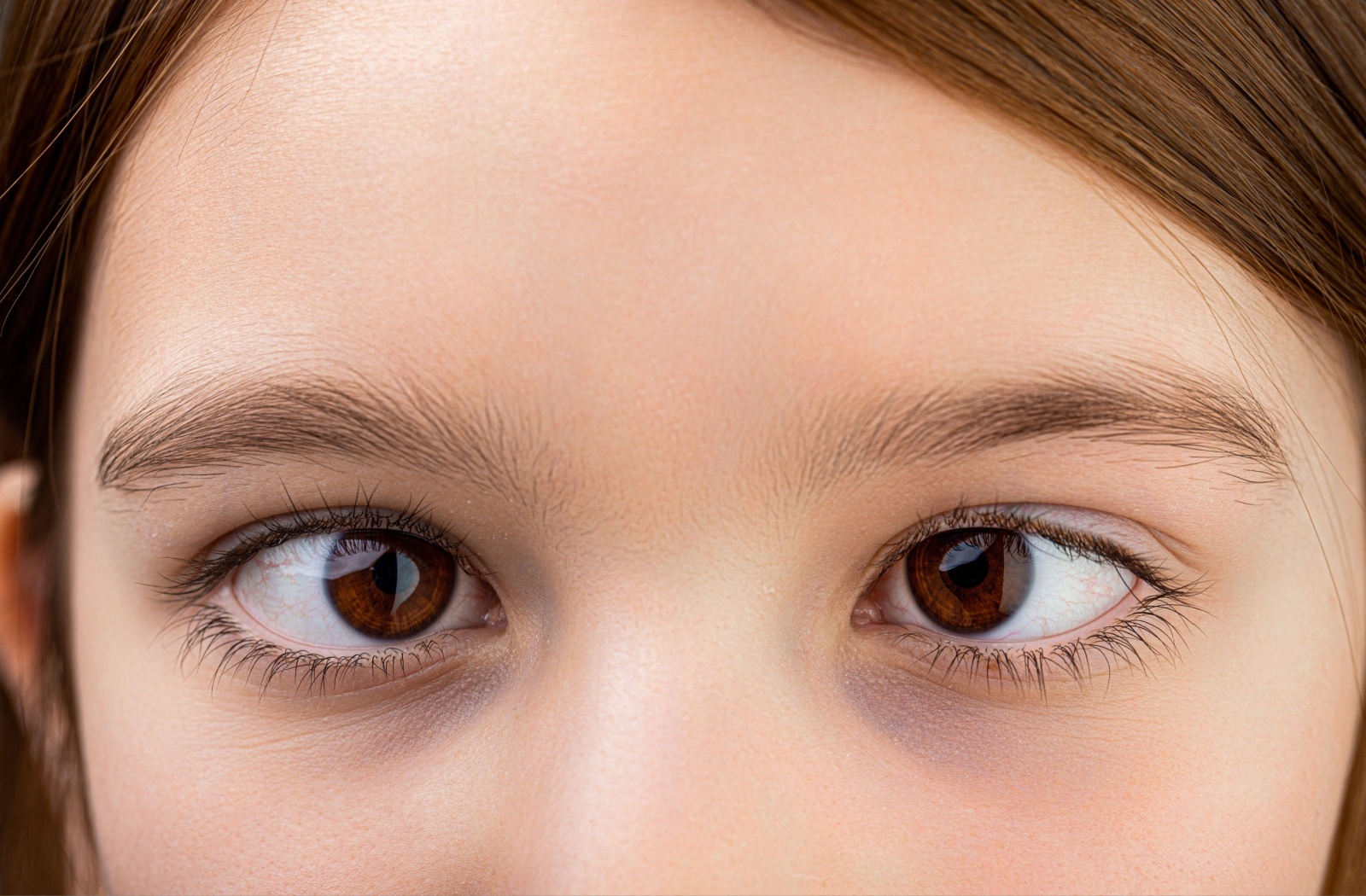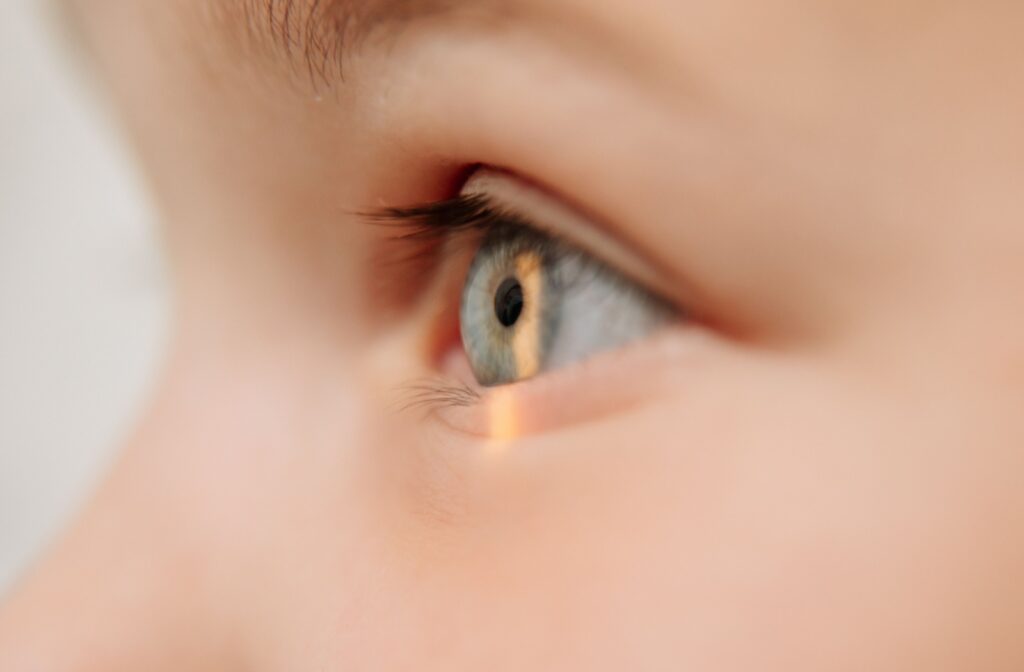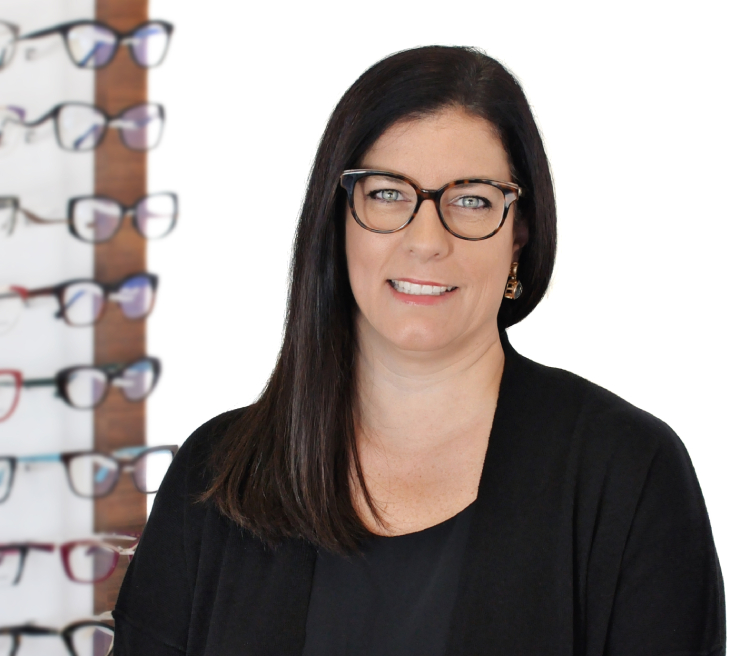When it comes to your child’s vision, recognizing problems early is key to supporting their eye health and overall development. Two common vision issues in children are amblyopia and strabismus. While they’re closely connected, they’re sometimes confused with each other.
Here’s the difference: Amblyopia impacts vision clarity and occurs when the brain basically “turns off” one eye. Strabismus arises from misalignment, where the eyes don’t work together as a team.
Both can affect your child’s ability to learn and play, but require different treatments. Read on to learn more about what sets these conditions apart and how they can be addressed.
How Vision Functions
Our eyes don’t work in isolation. Instead, they rely on a coordinated system involving the brain to interpret images, focus, and track movement. This “team effort” is known as functional vision, and its function is to see and interact with the world clearly.
Functional vision is made up of visual skills. Some of these skills include:
- Eye teaming: Both eyes work together to focus on the same object, an ability used for depth perception.
- Eye focusing: Shifting focus between objects quickly and clearly.
- Eye movement: Following a moving object smoothly or maintaining a steady gaze.
When any of these skills is disrupted, functional vision is compromised. With amblyopia, the brain struggles to interpret clear images, while strabismus impairs the eyes’ ability to team up.
What Is Amblyopia?
Amblyopia, commonly referred to as “lazy eye,” occurs when one or both eyes fail to achieve normal visual clarity. This isn’t due to a problem with the eyes themselves, but how the brain processes images from them. When the brain receives two conflicting images, it might “shut off” the weaker eye to minimize confusion.
Recognizing amblyopia can be tricky, as its signs aren’t always obvious. Look out for these symptoms:
- Reduced depth perception
- Difficulty catching or throwing objects accurately
- Clumsiness
- Eye fatigue during reading or other visual tasks
- Squinting or closing one eye to see better
If these signs are familiar, visit a professional who can perform a comprehensive eye examination. Early intervention can make a big difference.
What Is Strabismus?
Strabismus, also called “crossed eyes,” is a condition where the eyes don’t align correctly. This misalignment affects binocular vision, making it difficult for the eyes to work together as a team. Strabismus can cause one or both eyes to turn inward, outward, upward, or downward.
A noticeable sign of strabismus is misaligned eyes, but other symptoms include:
- Poor depth perception
- Eye strain or tiredness
- Frequent headaches
- Eye pain
- Blurry vision
Because some symptoms overlap with those of amblyopia, diagnosing the condition requires a functional eye exam by an optometrist, who can determine the severity and clarify next steps. Additionally, if you don’t treat strabismus, it can lead to amblyopia.

Comparing Amblyopia & Strabismus
While amblyopia and strabismus are distinct conditions, they share similarities that make them easy to confuse:
- Prevalence: Both conditions are among common vision issues in children, affecting 1 in 20 children.
- Impact: Both can interfere with vision clarity and eye movement.
- Common causes: Factors like genetics, low birth weight, and certain medical conditions can contribute to developing either condition.
- Treatment importance: Without timely treatment, amblyopia and strabismus may lead to long-term vision issues, including vision loss.
At their core, the key difference lies in how they impact vision:
- Amblyopia affects the brain’s ability to interpret images clearly, often leaving the vision in one eye weaker than the other.
- Strabismus affects eye alignment, impeding the eyes’ ability to focus on the same target and work as a team.
Identifying which condition is at play requires a detailed assessment by an optometrist.
Amblyopia & Strabismus Treatment Options
Both conditions are treatable, especially when addressed early. Your optometrist will develop a personalized treatment plan based on the severity and nature of the condition.
For amblyopia, treatments include:
- Prescription lenses: Glasses or contact lenses correct underlying refractive errors. If the amblyopia is caused by unequal refractive error, glasses can be used to give the binocular system support and allow the 2 eyes to work together, often requiring changes throughout the first few months as the amblyopic eye starts to function better.
- Vision therapy: Personalized exercises designed to enhance the brain’s ability to process visual information.
- Surgery: If cataracts or other structural issues cause amblyopia, surgery may be necessary.
- Eye patches: Wearing a patch over the stronger eye encourages the brain to rely on the weaker one, strengthening it over time. At Ottawa Vision Therapy, we no longer use eye patching, as it is an outdated treatment that is being phased out.
- Atropine eye drops: These drops temporarily blur the vision in the stronger eye, to achieve a similar goal as an eye patch. At Ottawa Vision Therapy, we are have also phased out atropine eye drops in favour of more effective treatment with vision therapy..
Treatments for strabismus may include:
- Corrective glasses: These improve eye alignment by addressing refractive errors.
- Vision therapy: Exercises to strengthen eye muscles and improve coordination.
- Surgery: Eye muscle surgery may be recommended to physically align the eyes.
Treatment success often depends on early diagnosis, so prioritizing regular eye exams is helpful.
Vision Therapy for Amblyopia and Strabismus
Vision therapy is an effective treatment for both conditions, as it targets the root cause of visual dysfunction by retraining the brain and eyes to work together more effectively. In cases of amblyopia (lazy eye), it helps strengthen the weaker eye and improve binocular vision, going beyond what glasses or patching alone can achieve. For strabismus (eye turn), vision therapy can improve eye alignment and coordination, encouraging both eyes to focus and track together. Through personalized exercises and in-office treatments, vision therapy builds the neural connections needed for lasting visual improvement—making it a powerful, noninvasive option for children and adults alike.
Set Your Sights on a Healthier Future
Healthy eyes are the foundation of a bright future for your child. By recognizing the symptoms of amblyopia and strabismus early and seeking professional care, you give your child the tools they need to excel academically, socially, and beyond.
If you’re concerned about your child’s vision, our experienced team at Ottawa Vision Therapy is here to help. Our doctors and vision therapists are trained in providing functional vision examinations and comprehensive vision therapy programs to help children overcome these visual hurdles. Visit us or ask your optometrist for a referral, and we’ll develop a personalized vision therapy treatment plan tailored to your child’s unique needs.
Don’t leave their vision to chance. Give them every opportunity to see the world clearly.




